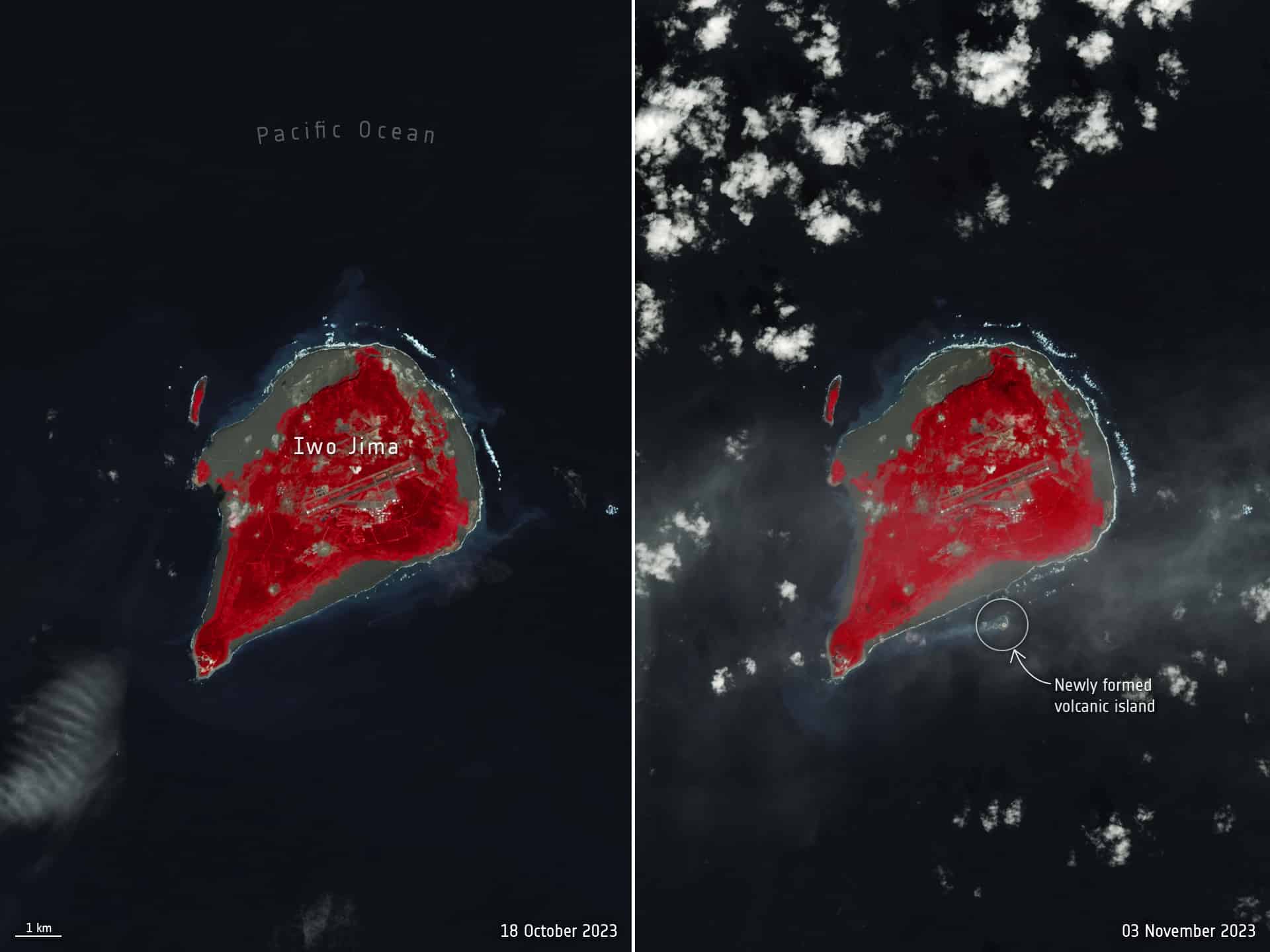
An underwater volcanic explosion last month created a new island in the Pacific Ocean that is now visible from space. Satellite images from the European Space Agency (ESA) show the new landmass sitting one kilometer off the coast of Japan’s Iwo Jima Island. However, experts believe the island may not actually last for much longer.
New land
It all started about three weeks ago when an unnamed undersea volcano abruptly erupted. Within 10 days, ash and rocks accumulated on the shallow seabed, gradually rising above the sea surface.
By early November, a new island in Japan was born, measuring about 100 meters in diameter and as high as 20 meters above sea level. The site has featured many eruptions of steam and lava in recent years, researchers from the University of Tokyo said in a news release.
The latest satellite image was taken by the Landsat 9 satellite on November 3rd. The satellite, launched by NASA in 2021, spotted the island from its position 705 kilometers above the Earth. This image was then compared with previous observations of the region collected by the same satellite on October 18th, when the island didn’t exist.
Yuji Usui, an analyst in the Japan Meteorological Agency’s volcanic division, told AP that volcanic activity in the area has subsided and that the island has shrunken as its structures are easily washed away by waves. He said experts are still analyzing the development but anticipating that the island won’t likely survive much longer.
It’s not the first time in recent years that undersea volcanoes and seismic activity have formed new islands. In 2013, an eruption in the Pacific Ocean south of Tokyo created an island. In the same year, an island surfaced after an earthquake in Pakistan. Then, in 2015, another island was created due to the eruption of a submarine volcano near the coast of Tonga.
There are approximately 1,350 potentially active volcanoes on land worldwide, according to the US Geological Survey. In addition to these, scientists have identified thousands of active submarine volcanoes, with the belief that there could be many more beneath the waves — potentially hundreds for every land-based volcano. We may yet see more islands popping up.






